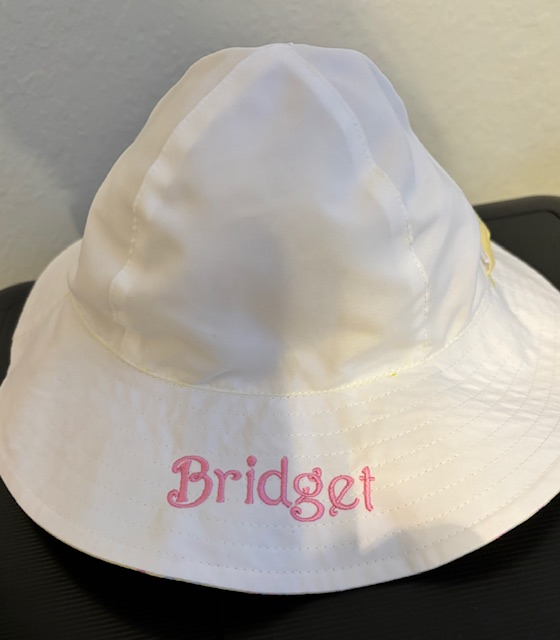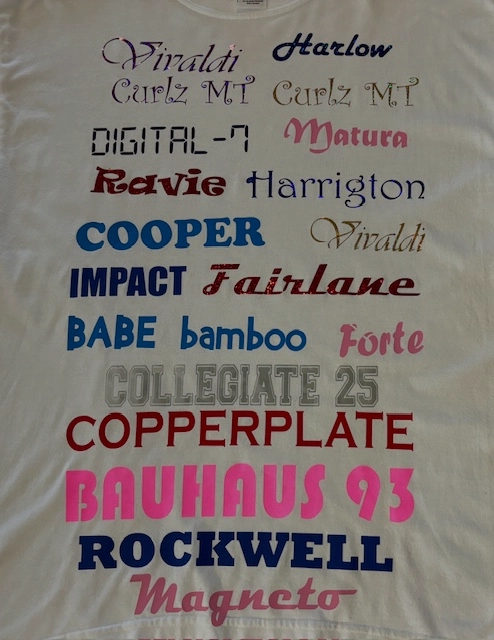The Art of Custom Embroidery: Opening the Secrets to Creating Distinct and Memorable Designs
Embroidery, a craft steeped in practice and artistry, holds within its detailed stitches the power to transform fabric right into a canvas of special expression. The keys to developing custom-made needlework layouts that mesmerize the eye and leave an enduring impact hinge on a fragile equilibrium of strategy, creative thinking, and attention to detail. As we explore the world of custom embroidery, we discover the nuanced interplay between string option, sew intricacy, and style customization that raises a plain garment to a job of art. Join us on a trip with the art of customized embroidery as we decipher the mysteries behind crafting truly unforgettable and distinct productions.
Picking the Right Embroidery Threads
When picking embroidery strings, what vital factors should you think about to ensure the most effective results for your personalized designs? The option of needlework thread is vital in figuring out the last outcome of your embroidered style. Among the key factors to consider is the product of the string. Different materials such as cotton, polyester, rayon, and silk use differing levels of shine, resilience, and structure. It is necessary to select a thread product that enhances the textile you are stitching on and straightens with the preferred look of the style.
Thicker threads can include dimension and texture to your layout, while finer threads are ideal for detailed details and tiny text. In addition, thinking about the color fastness and washability of the string is crucial to make certain that your customized designs preserve their quality and vibrancy over time.
Discovering Different Stitch Methods
To explore the world of 'Checking out Different Stitch Methods', one need to grasp the details and nuances that each sewing method offers the art of embroidery. Different stitch strategies not only include visual rate of interest but additionally add to the general texture and dimension of the layout. One prominent stitch technique is the satin stitch, which involves carefully packed parallel stitches to develop a smooth and shiny surface, perfect for filling up in shapes and producing vibrant details.
On the other hand, the backstitch is a flexible strategy usually used for describing and including fine details. It includes sewing in reverse to produce a strong line of embroidery. Furthermore, the French knot stitch includes a responsive aspect to layouts, perfect for creating textured accents like blossom centers or decorative touches.
Checking out content different stitch strategies permits embroiderers to have fun with light, shadow, and deepness within their layouts, elevating the visual appeal and imaginative top quality of their needlework tasks. By mastering various stitching methods, one can open endless possibilities for creating distinct and unforgettable custom-made embroidery pieces.
Incorporating Personalized Design Elements
Having checked out the complexities of various stitch methods such as the satin stitch, backstitch, and French knot, the focus currently shifts towards incorporating individualized style elements in Learn More customized embroidery jobs. Individualized style elements play a vital role in making embroidery tasks absolutely special and unforgettable.
An additional way to integrate personalized style elements is by consisting of signs or themes that hold special significance to the recipient or reflect their rate of interests and personality. Including a favorite blossom, animal, or hobby-related sign can make the needlework design a lot more purposeful and customized. Additionally, choosing colors that reverberate with the recipient or align with the designated motif can even more enhance the customization of the needlework project.
Grasping the Art of Shade Control

One secret aspect of color coordination is understanding shade concept. This includes recognizing how various shades connect with like it each other, the feelings they share, and exactly how they can be incorporated to produce visually enticing designs. By applying shade theory principles, embroiderers can create unified shade palettes that improve the total look of the design.
Furthermore, taking notice of comparison is important in shade coordination. Using contrasting colors can help specific components of the design pop, improve readability, and create a visually dynamic embroidery item. By grasping the art of shade sychronisation, embroiderers can raise their layouts and develop memorable pieces that resonate with customers and visitors alike.
Enhancing Texture With Advanced Embroidery Stitches

Bullion knots, on the other hand, can be made use of to develop twisted, ropelike components that include an extravagant feel to the embroidery. Trying out with these innovative needlework stitches enables you to push the boundaries of traditional embroidery and create absolutely one-of-a-kind and aesthetically attractive textures in your layouts.
Verdict
Finally, the art of custom needlework includes a combination of picking the ideal threads, checking out various stitch strategies, including individualized style elements, understanding color coordination, and boosting structure with advanced stitches. By recognizing and carrying out these crucial elements, embroiderers can produce special and remarkable designs that display their imagination and ability. Embroidery enthusiasts can open the secrets to producing stunning and custom pieces that stand apart and leave a long-term perception.